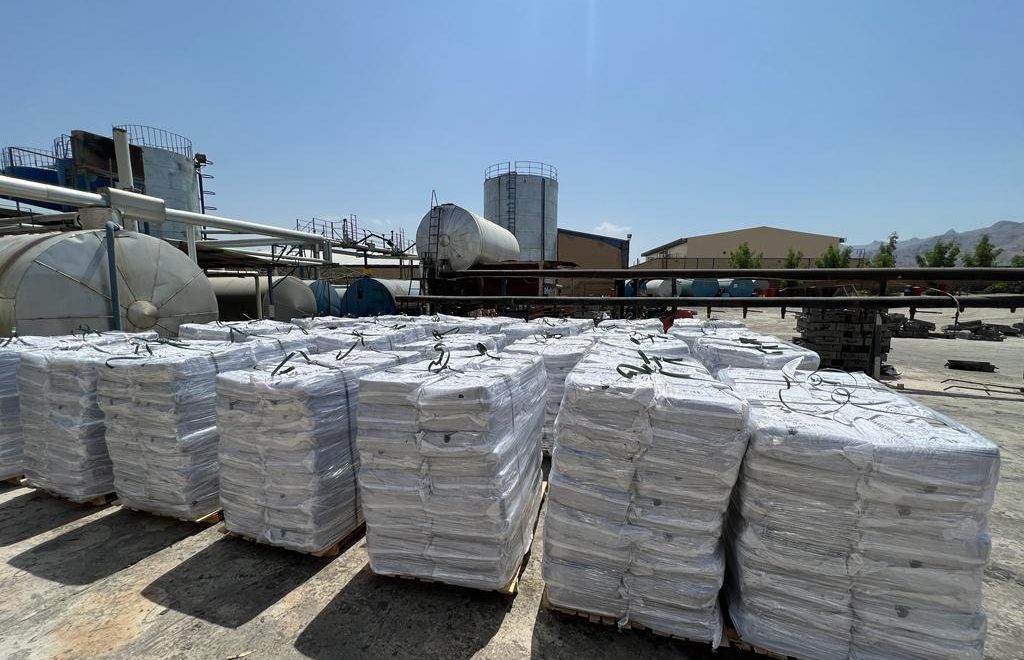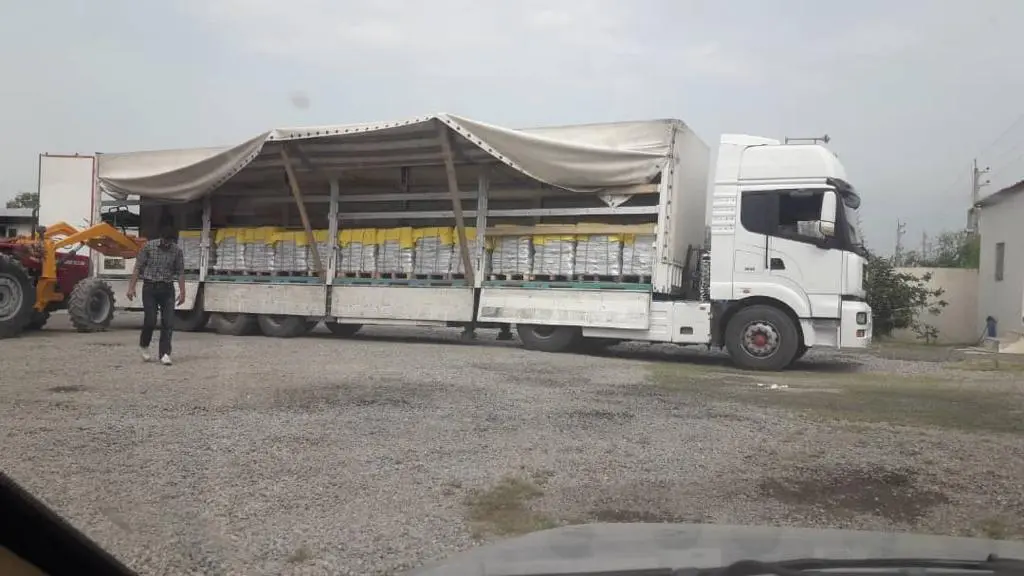 Oxidized Bitumen 105/35
Oxidized Bitumen 105/35
OXIDIZED BITUMEN 105/35 – HIGH-PERFORMANCE BLOWN ASPHALT
RAHA OIL is a trusted supplier and exporter of Oxidized Bitumen 105/35 based in Dubai, UAE. Our premium blown asphalt offers excellent durability, adhesion, and thermal performance for a wide range of construction and industrial applications.
Oxidized Bitumen 105/35 manufactured by air-blowing through an asphalt flux. Special physical properties of its grade can be used in different applications in the construction, roads and water proofing. Oxidized Bitumen 105/35 is based on petroleum bitumen which is made by blowing bitumen 60/70 by very hot air. The numbers relate to the midpoint of the material’s softening point and penetration respectively. Blown Asphalt 105/35 is a good grade of oxidized asphalt to use as bonding compounds as hot melt adhesive at an application rate of approximately 1 Kg/m3 to bond the preformed sheets together and to structure which is made by Bitumen 60/70 by hot air. Blown bitumen 105/35 is a semi-solid oxidized grade of pure petroleum bitumen manufactured by air-blowing through an asphalt flux. Special physical properties of its grade can be used in different applications in the construction business. Oxidized Asphalt 105/35 is produced by either a Continuous or Staggered Blowing Process. Heated Penetration Grade Bitumen under a controlled environment is blown with air which controls the Oil Content in the Bitumen while it oxidized. The different grades for suited applications produced are designated by two numbers to indicate the mid-points of their softening point and penetration ranges.
WHAT IS OXIDIZED BITUMEN 105/35?
Oxidized Bitumen 105/35 is a semi-solid blown asphalt manufactured by air-blowing base bitumen (typically 60/70 grade) in a controlled environment to improve its physical properties. The grade “105/35” refers to its softening point (~105 °C) and penetration (~35 dmm) values.
This process increases hardness, thermal resistance, and chemical stability — making it suitable for applications that require strong adhesion, moisture resistance, and long-lasting performance.
APPLICATION OF BLOWN ASPHALT 105/35
Oxidized Grade Bitumen shall be broken up into small pieces and heated slowly to the application temperature of 220ºC to 230ºC. Oxidised Bitumen should be heated double temperature against the softening point to be able to have flow and viscosity. Blown asphalt also is the aesthetic adhesive substrate for asphalt membranes. In addition, metal and concrete protective coating under atmospheric conditions. Oxidized Bitumen 105-35 is used for coating of pipelines. Also impregnated of the coating of papers and boards. Bonding agent for tiles and mastic also bonding agent for cork plates and adhesive for roofing felts. Furthermore, blown bitumen is adhesive for laminated boards for protection for electrical wires. Oxidized Grade Bitumen shall be broken up into small pieces and heated slowly to the application temperature of 220ºC to 230ºC. Oxidized Bitumen should be heated at double temperature against the softening point to be able to have flow and viscosity. Blown asphalt also is the aesthetic adhesive substrate for asphalt membranes. In addition, metal and concrete protective coating under atmospheric conditions. Oxidized Bitumen 105/35 is used for coating pipelines. Also impregnated of the coating of papers and boards. Bonding agent for tiles and mastic also bonding agent for cork plates and adhesive for roofing felts. Furthermore, Blown bitumen is adhesive for laminated boards for protection from electrical wires. Oxidized Bitumen 105/35 used in the chemical, fuel, lacquers, varnishes, paper-pulp-board, textile processing, road construction, pavement, paint, crack seal and repairmen, civil works, roofing, construction business; sealing and insulating buildings, adhesive, construction materials additive, dust-binding, insulating and impregnating agent, make rubber and plastic products. The bitumen 105/35 products are for paving. also used in asphalt-based paints for corrosion protection of metals, in lining public works structures, adhesives in electrical laminates, the base for synthetic turf; typical uses for bitumen 105/35 used also for water-proof application and corrosion resistance for pipe coating, Portland cement pavement, hydraulic applications, paint manufacturing. Blown bitumen 105/35 is using insulation and isolation bitumen membrane sheet. Car undercoating Automobile industry is especially required for blown bitumen. Vehicle undercoating material is based on Bitumen. Bitumen provides excellent waterproof, dustproof, and noise proof for automobile undercoating. Blown Asphalt 105/35 should be heated at double temperature against the softening point to be able to have flow and viscosity. To use blown bitumen 105/35, surfaces must be dry, clean, and free of loose particles, formwork, curing products, irregularities, slurry, etc.
KEY BENEFITS OF OXIDIZED BITUMEN 105/35
- High thermal stability: Performs well in hot climates and elevated temperature conditions.
- Strong adhesion: Excellent bonding to membranes, substrates, and coatings.
- Water & chemical resistance: Effective barrier against water, alkalis, and mild chemicals.
- Versatile performance: Suitable for industrial, construction, and protective applications.
TECHNICAL ADVANTAGES OF BLOWN BITUMEN 105/35
- Durability
- Flexibility
- Water Resistant
- Chemical Stability
USAGE OF BITUMEN 105/35
The most majority of bitumen 105/35 used in asphalt for road construction is conventional bitumen; that is why it is often known as paving grade. The term ‘pen grade’ is short for penetration grade and reflects the fact that this type of bitumen 105/35 product is often classified (in Europe and parts of Asia) using the penetration test. The term straight run refers to the fact that this type of bitumen is often produced direct from the vacuum distillation process, without any further modification. Current estimates put the world use of bitumen at approximately 102 million tonnes per year (Eurobitume and the Asphalt Institute, 2011), and about 85% of all the bitumen produced is used in asphalt for the construction of roads and other paved areas.
SOME OF THE MOST FAMOUS APPLICATION OF BLOWN ASPHALT 105/35
- Oxidized Grade Bitumen shall be broken up into small pieces and heated slowly to the application temperature of 220ºC to 230ºC.
- Blown asphalt also is the aesthetic adhesive substrate for asphalt membranes. In addition, metal and concrete protective coating under atmospheric conditions.
- Oxidized Bitumen 105/35 is used for coating of pipelines. Also impregnated of the coating of papers and boards.
- Bonding agent for tiles and mastic also bonding agent for cork plates and adhesive for roofing felts. Furthermore, Blown bitumen is adhesive for laminated boards for protection for electrical wires.
- Hard asphalt grades also suitable for sealing saw cuts and joints where there is expected to be the minimum amount of moving in the joint. Their wide temperature range prevents bleeding in high temperature uses.
- Oxidized asphalt can also be used in industrial usages like roofing, flooring, mastics, pipe coatings, electrical roles.
OXIDATION PROCESS OF BLOWN ASPHALT 105/35
Often by the correct selection of the crude oil feed and operating conditions, oxidized bitumen 105/35 complying with a particular specification can be manufactured directly from the distillation process. If required, the physical properties of the short residue can be further modified by ‘air blowing’. This is an oxidation process that involves passing air through the short residue, either on a batch or a continuous basis, with the short residue raised to a temperature between 240 and 3208c. The main effect of blowing is that it converts some of the relatively low molecular weight ‘maltenes’ into relatively higher molecular weight ‘asphaltenes’. The result is a reduction in the penetration of the bitumen with a comparatively greater increase in the softening point, which has the effect of improving the lower temperature susceptibility of the air-blown bitumen.
HEATING, HANDLING & SAFETY
To use Oxidized Bitumen 105/35 effectively:
- Heating: Break bitumen into small pieces and heat slowly to approximately 220–230 °C for optimal flow and viscosity.
- Safety: Wear protective gloves, goggles, and masks to avoid burns and inhalation of fumes. Do not overheat above safe levels.
- Storage: Store in a cool, dry area away from direct sunlight and flames. Refer to the MSDS for complete safety guidelines.
PACKING OF OXIDIZED ASPHALT 105/35
 Oxidized Asphalt 105/35
Oxidized Asphalt 105/35
Oxidized Asphalt 105/35 in various packing, including bitumen 105/35 is available in 20 & 50 kg Kraft Paper Bags / Poly Amide Bags, 25 kg Carton box & 150, 180, 200 Kg Steel Drums. In addition, oxidized bitumen packing also palletize, 40 bags can stack on the pallet. 20 pallets can load to the 20ft container.
WHY CHOOSE RAHA OIL?
UAE-based supplier with global export capabilities
- Consistent quality and testing to international standards
- Competitive pricing with reliable delivery
- Customized packaging and documentation support
Whether you’re sourcing material for large civil works or industrial coating projects, Raha Oil delivers quality oxidized bitumen from Dubai to worldwide destinations.
TECHNICAL DATA SHEET OF OXIDIZED ASPHALT 105/35
Bitumen 105/35 TEST METHOD UNIT SPECIFICATION
Specific gravity @ 25/25 °c ASTM D70 Kg/cm³ 1.05 approx
Penetration @ 25°c ASTM D5 mm/10 30-40
Softening point °c ASTM D36 °C 100-110
Ductility @ 25°c ASTM D113 cm 0.2 Max
Loss on heating(wt) % ASTM D6 wt % 0.2 max
Flashpoint °c ASTM D92 °C 250 min
Solubility is CS2(wt) % ASTM D4 wt % 99.5 max
REQUEST A QUOTE
Email: Info@rahaoil.ae
Phone / WhatsApp: +971 56 281 7292
Office: No. 2305, Burlington Tower, Dubai, UAE
For detailed technical data sheets (TDS), MSDS, pricing, or sample requests contact our sales team today.
FREQUENTLY ASKED QUESTIONS (FAQ)
Q: What does “105/35” mean in bitumen grades?
A: It refers to the midpoint of softening point ~105 °C and penetration ~35 dmm, indicating a harder, high-heat-resistant oxidized bitumen.
Q: Can Oxidized Bitumen 105/35 be used in hot climates like the UAE?
A: Yes, its high softening point and thermal stability make it well-suited for hot and harsh environments.
Q: Is custom packaging available?
A: Yes , we provide custom packaging and export documentation as per your requirements.
For more information, please Contact our Sales Team.

